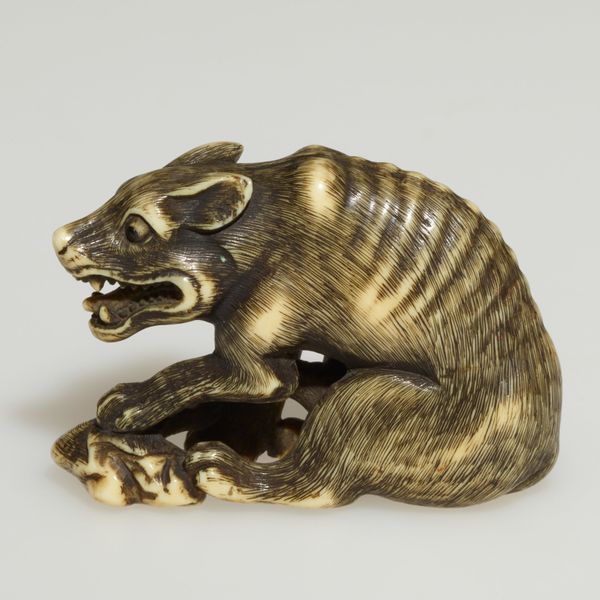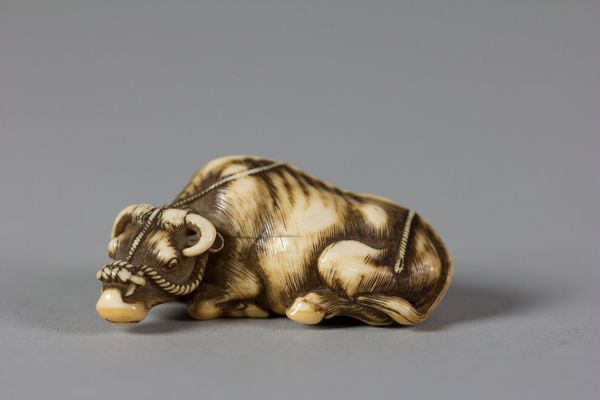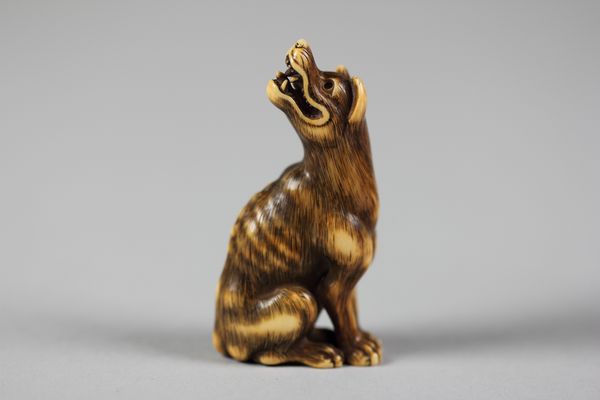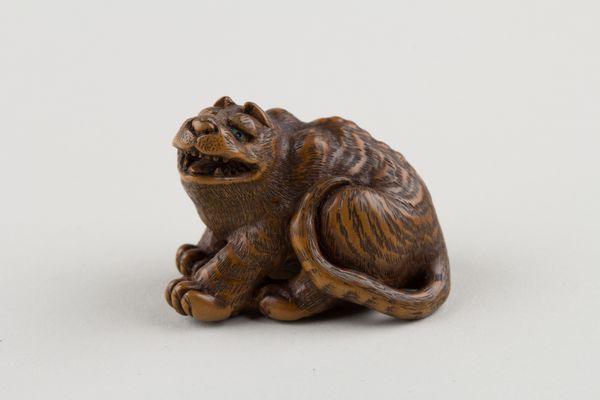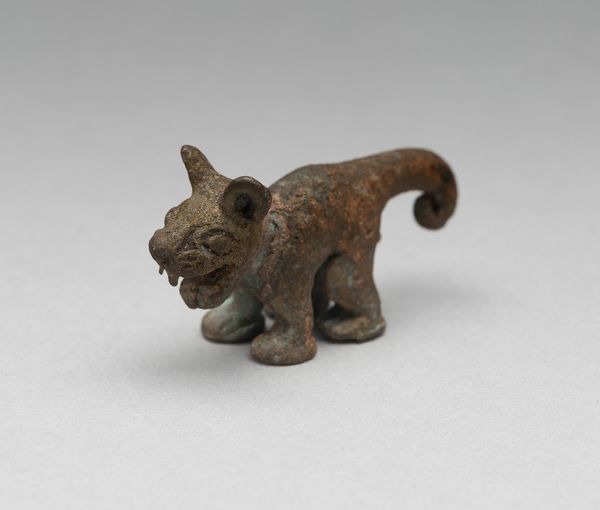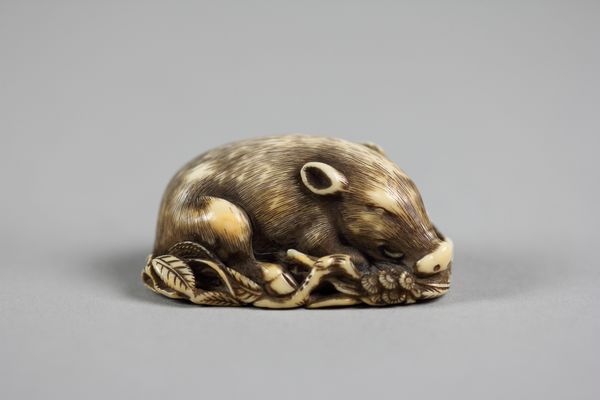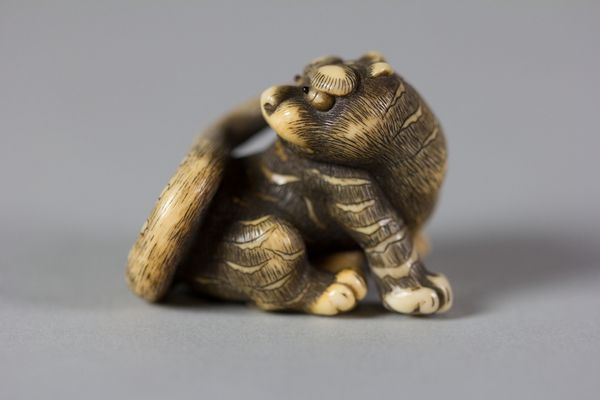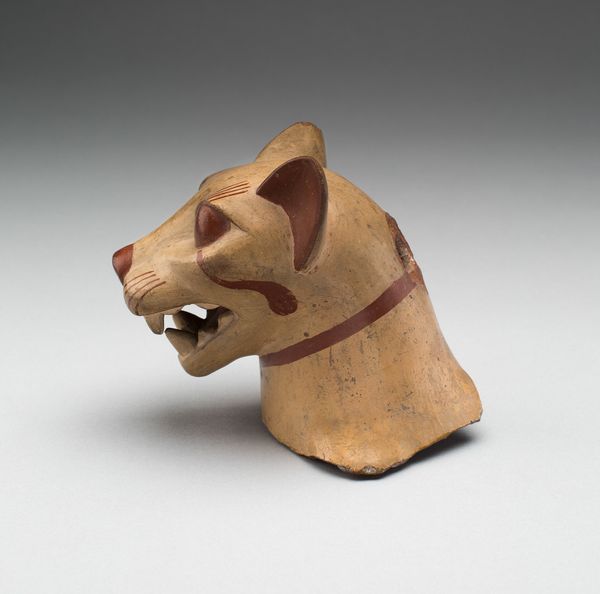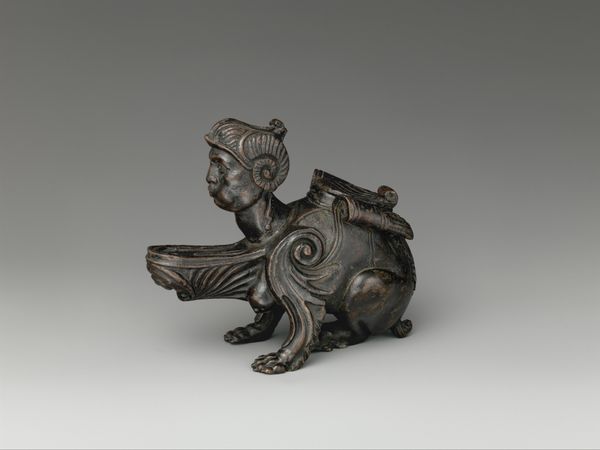
carving, sculpture, wood
#
carving
#
animal
#
sculpture
#
asian-art
#
ukiyo-e
#
japan
#
sculptural image
#
figuration
#
sculpture
#
wood
Dimensions: H. 1 1/4 in. (3.2 cm); W. 7/8 in. (2.2 cm); D. 2 1/8 in. (5.4 cm)
Copyright: Public Domain
Editor: Here we have “Wolf,” a wood carving by Tomotada, sometime between 1767 and 1833. It’s this amazing miniature sculpture, so detailed! The wolf's expression seems really intense, almost confrontational. What can you tell us about its role, perhaps in its time and place? Curator: This netsuke presents a fascinating insight into the Edo period in Japan. While seemingly just an animal carving, its display in a museum context today elevates it beyond its original practical function as a toggle for securing pouches or containers. This is now viewed as a work of art, of ukiyo-e inspired sculptural art. But originally? It’s important to understand who might have commissioned such an object and what messages it conveyed to its intended audience. Editor: Commissioned by whom? How would they view this versus us viewing this in the Met? Curator: Precisely. Consider the merchant class, increasingly wealthy but socially restricted. Art became a means of expressing status and aspirations. An object like this wasn't merely decorative, it became a symbol, subtly asserting a patron's taste, knowledge, and connection to broader cultural narratives, or maybe even satirizing established norms. Do you see this playfulness anywhere in the work itself? Editor: I think the size maybe adds a layer, it is really small. Its size contrasts with its ferocious expression. So it almost makes it cartoonish? And then displayed in a massive museum now, that absurdity multiplies. Curator: Exactly! Museums curate not just objects, but also meanings. Showing it now places it in dialogue with centuries of art history and changing social values. Recognizing this transformation is key to understanding its full complexity. Editor: That makes so much sense. I never thought about the change in social meaning because of the museum itself. Curator: Right. Context is crucial. Museums both preserve and reinterpret, shaping how future generations will perceive this little wolf and the society that produced it.
Comments
No comments
Be the first to comment and join the conversation on the ultimate creative platform.
